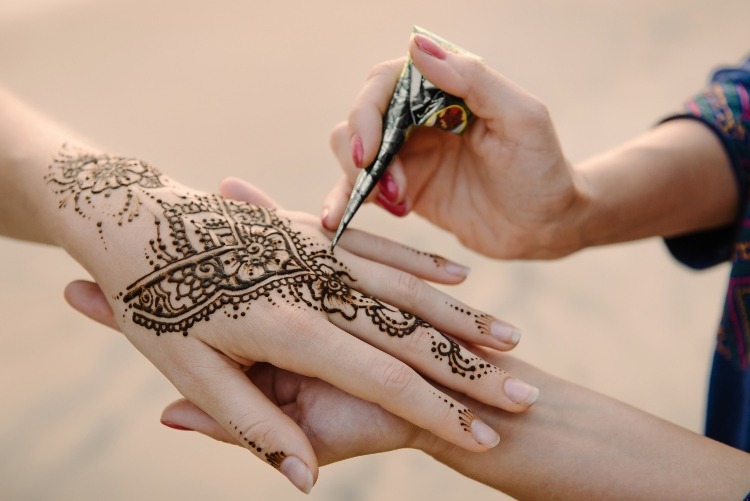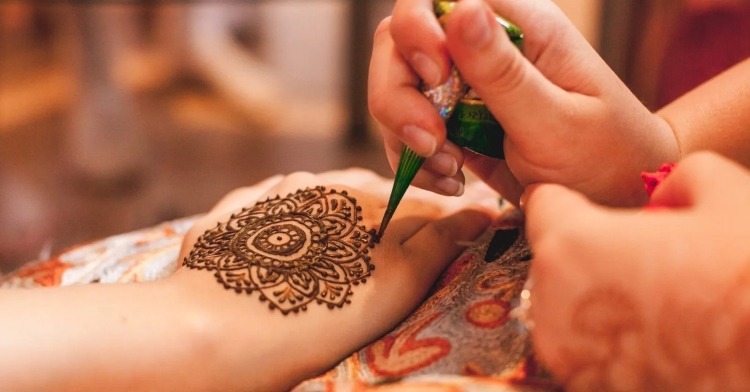Henna, the infamous plant that stems from an age-old tree through which its leaves produce a dye has been used for eons as a versatile beauty tool ranging from makeup to elaborate body art. Beyond that, it has been intertwined into the very fabric and history of the Arab world. It’s so old, it dates all the way back to ancient Egypt which is considered the birthplace of this sacred art.
Its Origins
Back during the times of ancient Egypt, the most prominent figures actively used the special dye for decorative purposes including Cleopatra, the last reigning queen of ancient Egypt who was said to have adorned and decorated her body with henna. Beyond that, other Egyptian rulers also used the dye including Rameses II whose dyed vivid red-orange hair still stands starkly above his mummified remains. Egyptians used to also paint the nails of the mummies using henna prior to their getting buried. Since then and for centuries ahead, henna has been used to dye skin, hair and fingernails as well as fabrics like wool, silk and leather.

The Creation Process
In today’s world, henna has grown to become a full-fledged art practiced by a special few who are known as henna artists. They would undergo a series of elaborate steps to create their unique designs. It all starts off with them making a paste for the body art by mixing water with the dried powdered henna until it forms a mud-like texture. Many other liquids may get mixed in including lemon juice and strong tea depending on the tradition. There are many artists who would also use molasses to make the henna stickier and thicker.

Using the wet henna paste, a wide collection of tools may be used to draw out the design with the most basic tool being a stick or twig. In Morocco, a syringe would be used instead but no matter what the tool, each henna artist would then draw out the design on people’s hands, sometimes even extending all the way to their arms. From there, the paste needs to be left for several hours to dry and once it does, it would peel off leaving behind a stain of a vibrant brown-black hue adorning each person’s hands.
The Infamous Henna Night
Today, beyond it being a simple art, henna also plays an even bigger role across the region, presenting itself differently in each of the Arab nations and their traditions. The one true link between all the countries is the treasured henna night, a night before the bride’s wedding day when she would gather with her friends to celebrate what is considered the second most important night of her life. It’s what many deem to be the Middle Eastern version of what is considered the equivalent of a bachelorette party abroad but in Arab culture, its significance stems from the fact that it’s considered the last night the bride spends at her parent’s home.

When it comes to the dye itself, it plays a special role in any typical celebration as among the festivities that include the dancing, the henna songs belting out from the speakers and the high-pitched ululation dubbed the zagrootah, each girl would excitedly wait her turn to get tattooed with beautiful designs whether it’s a butterfly or an elaborate floral pattern.
Such a loved tradition gets to be celebrated differently across Arab nations with countries like Tunisia celebrating it for 7 entire days. On the third day, the bride would get henna painted on her legs and feet while on the 6th day, the groom would get his pinky painted in henna. With Algeria, the bride’s mother-in-law would present her with jewelry and be the one to paint her hands with henna.
What Henna Means In The Middle East
Beyond henna nights, weddings, as well as celebrations like Eid El Fitr and Eid El Adha, are also marked by women getting adorned with decorative henna, its importance is unquestionable as within Arab culture, it holds a symbolic significance of representing good health and prosperity and when it comes to weddings, many believe that the darker the henna stain, the deeper the love between two individuals.
A deeper meaning behind the infamous dye moves beyond it being a celebratory tool. Throughout history, across the Middle East, henna has always held an intrinsic link to the desert landscape. It holds a significant role in the lives of desert dwellers and Bedouins as in that scorching environment, dominated by excruciating heat, one way to evade and relieve the effects of the intense temperatures is for people to soak their hands and feet onto the henna paste as it is known to have a cooling effect.
Today, the infamous dye continues to hold a special place in the heart of many Arabs whether it’s to celebrate a special occasion, to get dolled up for the sake of it, or to avoid a possible heat stroke in the hottest regions across the Middle East. Beyond the Arab world, it has even made its way abroad and become a new form of body art across the West.



